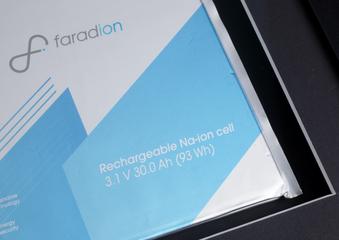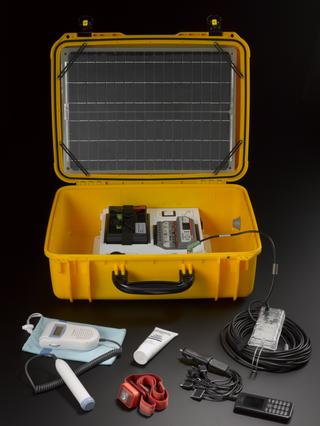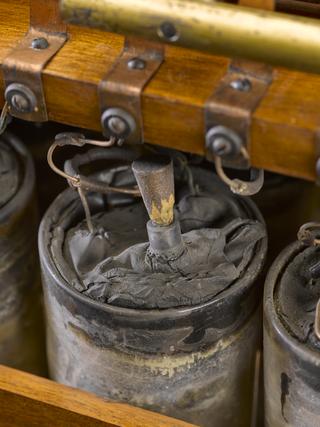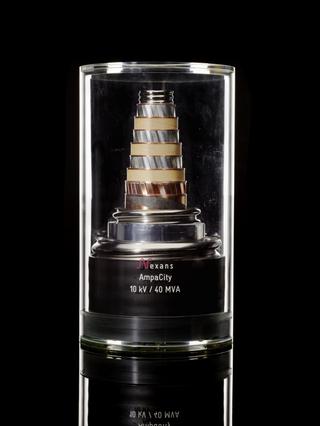
Circular porcelain junction box
- PART OF:
- The Bob
- Made:
- 1900-1915 in unknown place

Circular porcelain junction box, about 1910. Pierced four holes in lid. White porcelain cylinder with four holes to lid.
Part of the Bob Gray collection of electrical objects.
In 1910, most British houses still used gas or coal as their main source of fuel. Less than 10% were wired for electricity use. This means that this early porcelain junction box is fairly unusual and probably came from the house of someone with a little more money than the normal householder. Porcelain is non-conductive and so is a good material to use when protecting electrical circuits. In a household wiring system, electrical connections and terminals are usually housed within a junction box such as this one. The junction box serves a variety of functions. Having connections protected within a box is safer than them being exposed and also prevents people from tampering with them. They also hide the messy connections and allow for a tidier finish to a wiring system.
Details
- Category:
- Electricity Supply
- Object Number:
- Y2012.15.77
- Materials:
- porcelain
- Measurements:
-
36 mm 55 mm, 10 g
- type:
- junction box
- credit:
- Mr Robert Gray




